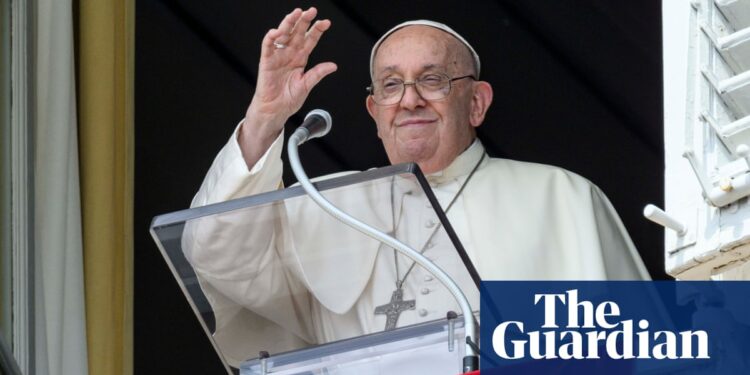Pope Francis is to embark on the longest, farthest and perhaps most challenging trip of his pontificate as he begins a 12-day Asia-Pacific tour that is expected to highlight environmental threats, emphasise interfaith dialogue and reinforce the importance of Asia for the Catholic church.
The 87-year-old will set off on Monday on a tour taking in Indonesia, Papua New Guinea, East Timor and Singapore, a trip that will clock up more than 20,000 miles by air.
Originally planned for 2020 but postponed due to the coronavirus pandemic, the visit is being seen as a nod to the importance of Asia, one of the few places where the church is growing in terms of baptised faithful and religious vocations.
Francis is scheduled to headline more than 40 events during the ambitious tour. “It is a show of strength for Pope Francis,” Massimo Faggioli, an Italian academic, told Reuters.
Shihoko Goto, the director of the Indo-Pacific Program at Washington’s Wilson Center, said the visit, coming as the pontiff struggles with health problems, “speaks volumes about the strategic importance of Asia for the church”.
Francis’s first stop will be Indonesia, the world’s most populous Muslim-majority country. Francis will visit Jakarta’s main mosque and is expected to tour a singular feature built in 2020 as a symbol of religious harmony: an underground “Tunnel of Friendship” that links the mosque to the country’s Catholic cathedral.
He will be accompanied by the grand imam, Nasaruddin Umar, and both are scheduled to later take part in an interfaith gathering. Francis, who in 2019 became the first pope to visit the Arabian peninsula, has long signalled that Catholic-Muslim dialogue is a priority.
The pope is also scheduled to meet Indonesia’s outgoing president, Joko Widodo, and to hold a mass for an estimated 80,000 people at a Jakarta stadium, an Indonesian church official told the Associated Press.
In Papua New Guinea, Francis will meet missionaries from his native Argentina. It is believed he will use the stop to address the threat of climate change, citing challenges such as rising sea levels and increasingly severe heatwaves and typhoons.
He will then head to East Timor to celebrate mass on the same seaside esplanade where Pope John Paul II offered a liturgy in 1989. The former pontiff was later credited with helping to cast a global spotlight on Indonesia’s brutal occupation.
Home to an overwhelmingly Catholic population, East Timor may force Francis to confront the clergy sexual abuse scandal. In 2022, the Vatican confirmed that it had imposed sanctions on the bishop Carlos Ximenes Belo, an East Timor independence hero, after allegations that he sexually abused young boys during the 1990s.
There is no word on whether Francis’s visit will include any reference to Belo, who remains revered for his efforts to win East Timor independence from Indonesian rule.
The pontiff’s last stop will be Singapore, where three-quarters of the population trace their roots to China. Analysts described the stop as part of the Vatican’s efforts to improve its ties with China, home to an estimated 12 million Catholics.
Last week the Vatican reported its “satisfaction” that China had officially recognised the Tianjin bishop, Melchior Shi Hongzhen, whom the Vatican installed in 2019. The Holy See described China’s official recognition of him under civil law as “a positive fruit of the dialogue established over the years between the Holy See and the Chinese government”.
With contributions from Associated Press and Reuters.







